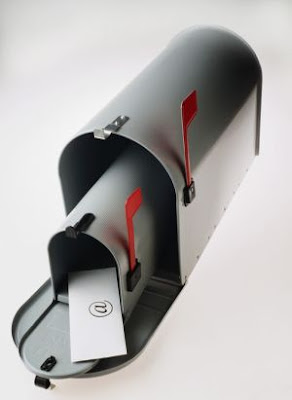 "The Intel Xeon processor 5500 series is the foundation for the next decade of innovation," said Patrick Gelsinger, senior vice president and general manager of Intel's Digital Enterprise Group. "These chips showcase groundbreaking advances in performance, virtualization and workload management, which will create opportunities to solve the world's most complex challenges and push the limits of science and technology."
"The Intel Xeon processor 5500 series is the foundation for the next decade of innovation," said Patrick Gelsinger, senior vice president and general manager of Intel's Digital Enterprise Group. "These chips showcase groundbreaking advances in performance, virtualization and workload management, which will create opportunities to solve the world's most complex challenges and push the limits of science and technology."
- "Nehalem is a game changer just about every way, especially performance. It overcomes most, if not all, the potential performance roadblocks associated with multicore configurations. It creates a foundation for future processors, and it resets performance expectations, especially for applications requiring high I/O or memory bandwidth." Jim McGregor, Industry Analyst, InStat
 "The London Stock Exchange recognises the importance of both low latency and latency consistency in the operation of efficient markets. We make extensive ongoing use of the Intel fasterLAB in order to evolve our core business applications and to test the effect of processor level innovation. We have been able to see the immediate impact of the move to 45nm and scaling to the multi core Intel® Xeon® processor 5500 series and beyond. The fasterlab – being equipped with advanced testing facilities and Intel engineering expertise – is a significant asset to our ongoing software development programs." Robin Paine, Chief Technology Officer, London Stock Exchange
"The London Stock Exchange recognises the importance of both low latency and latency consistency in the operation of efficient markets. We make extensive ongoing use of the Intel fasterLAB in order to evolve our core business applications and to test the effect of processor level innovation. We have been able to see the immediate impact of the move to 45nm and scaling to the multi core Intel® Xeon® processor 5500 series and beyond. The fasterlab – being equipped with advanced testing facilities and Intel engineering expertise – is a significant asset to our ongoing software development programs." Robin Paine, Chief Technology Officer, London Stock Exchange- "As one of the world's largest business and IT consultancy firms, Capgemini is asked by its clients to consult on improving their business performance while reducing costs. One of their primary concerns is the power consumption in the data centre. Capgemini evaluated the new Intel® Xeon® processor 5500 series because the promised performance per Watt could help our clients reduce their concerns. Capgemini noticed an enormous performance increase up to 500%, while the power usage dropped a staggering 65%. As an example queries to a Microsoft SQL* database took just ten seconds, compared to three minutes on a previous generation Intel® Xeon® processor. Even older applications, not designed for multi core processors are no challenge for this processor. The time for login sequences, went back from 40 seconds to just five. For Capgemini it is without doubt that this processor provides customers with increased performance while reducing energy costs." Arnold Verhoeven, Managing Consultant, Capgemini, Netherlands

- "Based on our benchmarks of the Intel® Xeon® processor 5500 series, we expect an increase in performance-per-Watt of about 30% or more, compared to the already very power-efficient combination of the previous generation Intel® Xeon® processors and the Intel 5100 (San Clemente) chipset. The new CPU is a strong candidate for highly demanding Physics applications." Helge Meinhard, Coordinator for Server and Storage Procurement at CERN-IT
- "It is a challenge to build a high performance computer that suits the different demands of our many research groups. Our new Sun* blade cluster powered by Intel® Xeon® processors 5500 series is a very well balanced system, tuned to highest performance. With 12 TB memory, a quad data rate Infiniband network and 160 TB fast parallel file system, we will be able to satisfy most of our users' demands for the next three to four years. The Sun* blades with Intel® Xeon® processor 5500 series also satisfied our energy consumption and TCO demands. Compared to our five-year-old cluster, the new platform provides more than 10 times the compute power for less than three times the energy consumption." Alexander Godknecht, CTO IT Services, University of Zürich

- "The European Space Agency (ESA) has recently been testing brand new systems based on the innovative new Intel® Xeon® processor 5500 series. Its unrivalled performance enables ESRIN, the ESA establishment in Frascati, Italy, to analyse and share large volumes of data collected by its satellites more quickly and efficiently via its Grid computing infrastructure. Early tests revealed that the new processor technology has reduced critical computational time, for example as requested for the mapping of large flooded areas, by 50 percent." Luigi Fusco, Senior Advisor of Earth Observation Applications and GENESI-DR project coordinator at ESA

























 •Foradditional depth and color to vector images, use gradients; but don't overuse so as to avoid adding to the file size and speeds.
•Foradditional depth and color to vector images, use gradients; but don't overuse so as to avoid adding to the file size and speeds.

 4. Update Your ContentYou need to periodically update the content of your website, even if it’s only a slight change.Search engine spiders give better rankings to sites that update content often.
4. Update Your ContentYou need to periodically update the content of your website, even if it’s only a slight change.Search engine spiders give better rankings to sites that update content often.



 Top Five 'Spyware Fighting' Tips
Top Five 'Spyware Fighting' Tips
